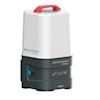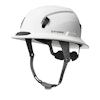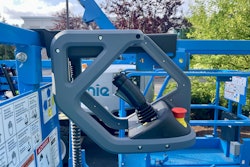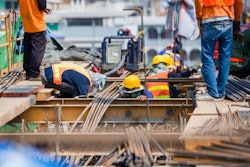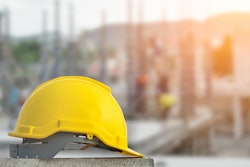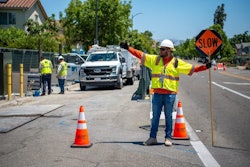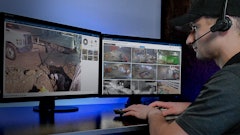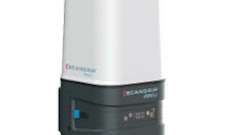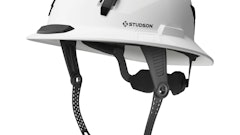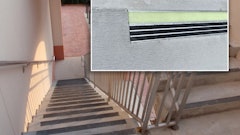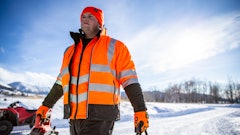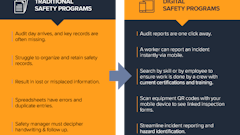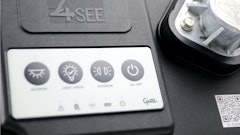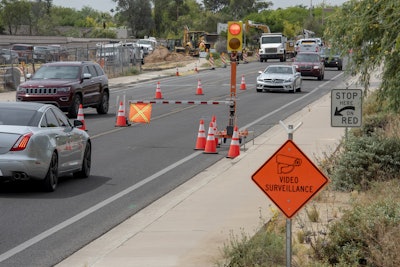
You don’t need a degree in traffic engineering to know a work zone can go south quickly. One distracted driver. One missed sign. One crew member not paying attention. That’s all it takes. And if you’re in the paving and maintenance business, you’re probably dealing with those risks more days than not.
So we called up Cornelius Morgan, Senior Director of Environmental Health and Safety at AWP Safety, to get some advice about how to build work zones that protect people—every shift, every job.
What’s the one thing you wish more crews understood about work zone safety?
Morgan: Easy. You have to build your zone like you’re expecting something to go wrong. Because eventually, it will. It could be a driver going 20 miles over the limit, or somebody cutting across cones because they’re in a rush. Whatever it is, your setup has to account for that kind of chaos.
Two important things: defense and visibility. Never assume drivers are paying attention. Always assume they are not. And, put yourself in their shoes. Can they see your signs from far enough away? Are you giving them time to react? Especially if you’re working over a hill, around a bend or near a merge point, your signage and your tapers need to start way before the hazard. That’s not just smart, it’s survival.
With tapers in particular, people often underestimate the length they need, especially at higher speeds. At 65 miles an hour, your taper better be long enough to move traffic gradually, and not all at once. It’s not something you try to do with a few cones, it just doesn’t work, but we see it. Use the full recommended taper length. Use your buffer zone. That’s your cushion if something goes sideways.
What about intersection work? That’s also tricky, right?
Morgan: It is. Especially at signalized intersections. Our policy is clear: if you’re not law enforcement, you don’t flag at a working traffic light. Too many signals and paddles confuse drivers. But if the signal’s off or in flash mode, then we treat it like an unsignalized intersection and put one flagger on each approach. And spacing matters. Set up your flaggers back from the stop bar so you’ve got a storage zone essentially. Give drivers a second to process what’s happening.
Depending on the situation, AFADs are a big help too. We’re seeing more customers use Automated Flagger Assistance Devices in spots where traditional flagging puts people too close to traffic. These units can be operated from a safer position that’s off the pavement. The machines handle the stop-and-go signals with bright lights and a gate arm, and they don’t get tired or distracted. Missouri DOT did a study that showed drivers actually prefer AFADs because they're easier to see and faster to react to. We’ve actually seen a reduction in near misses where they’ve been deployed, and crews tell us they feel more in control using them.
 Missouri DOT data found that AFADs significantly reduced average approach speeds, increased full stop distance and increased the first brake location where drivers reacted to stop controls. The study also found that 80% of drivers prefer AFADs over human flaggers.Evaluation of Automated Flagger Assistance Devices, MoDOT, 2018
Missouri DOT data found that AFADs significantly reduced average approach speeds, increased full stop distance and increased the first brake location where drivers reacted to stop controls. The study also found that 80% of drivers prefer AFADs over human flaggers.Evaluation of Automated Flagger Assistance Devices, MoDOT, 2018
Missouri DOT data found that AFADs significantly reduced average approach speeds, increased full stop distance and increased the first brake location where drivers reacted to stop controls. The study also found that 80% of drivers prefer AFADs over human flaggers.*
What are some easy-to-miss safety steps that make a big difference on the jobsite?
Morgan: Set your arrow boards correctly. They should be on the shoulder and angled slightly toward traffic—just enough to reduce glare. And they’ve got to be visible well in advance of your taper. If a driver’s squinting to see where to go, you’re already losing.
Same goes for your message boards. Don’t block signs with them. Don’t stick them in the buffer zone. And don’t forget to inspect them before the shift. Lights out? Message doesn’t scroll right? That’s a hazardous situation waiting to happen.
Another big one is to never split your traffic observer’s attention. This is your flagger, or as we call them, your Protector, and they should not pull double duty on the jobsite. That’s your early warning system. If they’re placing cones or assisting elsewhere, then nobody’s watching the road. Their job is to immediately sound the alarm if something's off. At AWP Safety, we use storm whistles to alert crews because the high pitch cuts through the racket—work zones can be very noisy, and there’s already a lot of shouting that happens, so you need a way to get everyone to take notice. So often, it’s the little things that prevent a bad day at work.
Speaking of the work day, what’s your go-to advice before a shift starts?
Morgan: Have the pre-job briefing. Every time. Go over the site layout. Review the day’s weather forecast. Mark the evacuation routes and make sure everyone knows where to go if something were to happen. And don’t gloss over obstacles like trees, curves or blind hills. If visibility is limited, don’t wing it. Adjust the setup or call a time-out. We train our folks to use “Stop Work” authority. If it’s not safe, it doesn’t happen. Period. Everyone, regardless of job title, has the same authority to halt work if they spot something.
What would you say to the person out there who’s been doing this for 20 years and thinks they’ve seen it all?
Morgan: I’d say experience is great, but it can’t turn you blind. The rules evolve. So do the risks. You have to stay sharp.
For example, it’s the little things again, right? Carefully walk your setup before you open it. Drive it, if you can. Ask yourself: Would I feel safe sending my family through this zone at 45 miles an hour? If the answer is no, fix it. Don’t wait for someone to get hurt to take it seriously.
The best way to avoid problems is to work with a professional traffic control provider. Because the reality is, behind every cone, sign or barricade, there needs to be a well-thought traffic control plan. It’s never something you put together right before the shift begins. It’s built to fit the site, the speed, the weather and the scope of the work, and it’s adaptable, because things will change.
Let me just say that we’ve had contractors come to us after a close call, saying they didn’t realize just how much was riding on getting that plan right. When you bring in folks who do this every day, who know the regulations inside and out, and who’ve seen the curveballs before—they help you stay ahead of the risk instead of scrambling after it.
Thanks, Cornelius. We appreciate the dialogue.
Morgan: Absolutely. Ensuring the safety of work crews and roadway users is our top priority because protecting lives is the most critical responsibility we have.
Safer work sites start at AWPSafety.com.


